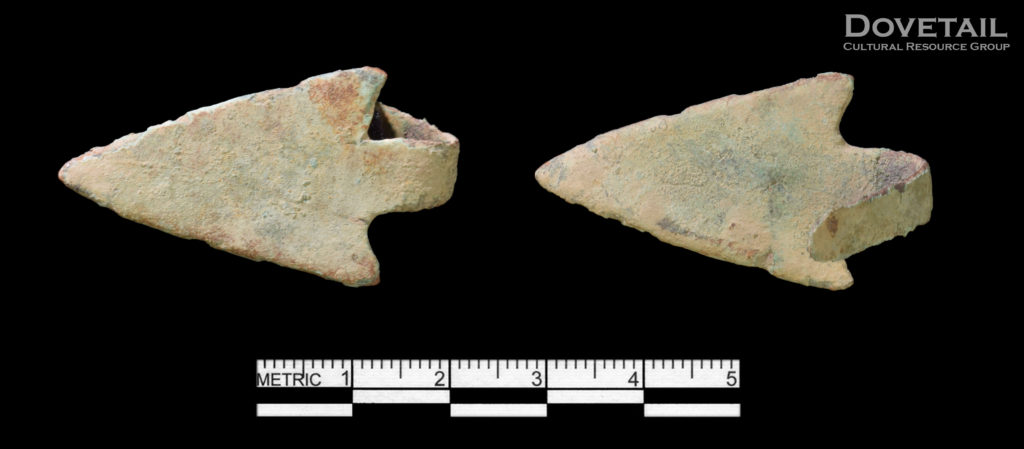By: Bill Liebeknecht
A copper alloy projectile point or “arrowhead” was recently recovered by Dovetail Cultural Resource Group during an archaeological survey at the John Dickinson Plantation near Dover, Delaware. Work was conducted on behalf of the Delaware Division of Historical and Cultural Affairs in preparation of a new system of trails for use by visitors. The survey entailed a controlled surface collection of the entire area where ground disturbing activities will occur. The area was recorded as site 7K-D-45 in the 1970s.

Individuals with knowledge of copper Contact period artifacts from the region were consulted on this exciting find. They reported that this was likely the first copper alloy arrowhead to be recovered from Delaware. Others pointed out that the style differed from other copper arrow tips recovered from other states in the area in that it has a “tang” or shaft for attaching the head to the arrow, whereas others from the region were pierced with a central hole for attaching the arrowhead to the shaft of the arrow. Dr. Greg Lattanzi, Curator and New Jersey State Archaeologist, provided similar examples from New York and Canada. This begs the question: why is this artifact here in Delaware? The earliest-known contact between Europeans and Native Americans in Delaware was documented in 1608 during the voyages of Captain John Smith and in 1609 when Henry Hudson entered the Delaware Bay. A number of “Indian towns” are noted on earlier maps of the Nanticoke River and its tributaries. To date, very few European trade goods have been documented in Delaware.
The most likely source of the arrowhead may be from the Susquehannock Indians, who were heavily vested in the fur trade in Pennsylvania and had migrated south into Delaware during the seventeenth century. European goods, including copper, iron, and brass items, were of high trade values to the Native American groups in the region. Copper and brass items such as kettles were often recycled, cut down into various ornaments and projectile points. It may be that this projectile point was once part of a cooking vessel. One thing is certain, though, the mere presence of this artifact in central Delaware is a rare find indeed.
Any distributions of blog content, including text or images, should reference this blog in full citation. Data contained herein is the property of Dovetail Cultural Resource Group and its affiliates.

